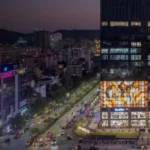Inside a Grade A Building: What Really Sets It Apart
- 27th June 2025
In commercial real estate, labels like “Grade A” are often used as shorthand for quality — but few pause to ask what that quality really means. Is it just about glossy lobbies and glass facades? Or is it something deeper?
At Amar Builders, we believe a Grade A building isn’t defined by its appearance, but by its intention, performance, and longevity. Here’s what actually sets it apart.
1. Compliance That Goes Beyond the Checklist
A true Grade A building isn’t just code-compliant — it’s future-ready.
From fire safety norms and environmental ratings to structural durability and accessibility standards, the difference lies in how proactively these elements are integrated. In a Grade A development, compliance isn’t a final step — it’s the foundation.
2. Engineering That Stays Invisible (And That’s a Good Thing)
The best engineering in a commercial building is often the least visible.
- Smart plumbing and drainage that prevent future retrofit headaches
- Power and backup systems that don’t flinch under pressure
- HVAC systems that quietly maintain comfort across varying loads
Grade A means systems that serve without disruption, year after year.
3. Façade Design That Thinks for Itself
It’s not about being flashy — it’s about being smart.
A well-designed façade:
- Allows in natural light but blocks out excessive heat
- Reduces HVAC loads and power consumption
- Elevates aesthetics while supporting performance
Materials, orientation, and shading devices all contribute to the long-term cost-efficiency of the building — not just its appearance.
4. Floorplate Efficiency That Adds Real Value
Grade A floorplates are designed, not just measured.
- They reduce wasted corridors and dead zones
- Enable flexible layouts for different teams or tenants
- Enhance circulation and movement without visual clutter
An efficient floorplate doesn’t just fit more people — it enables better work.
5. MEP: The Unseen Signature of Quality
MEP (Mechanical, Electrical, and Plumbing) systems are the backbone of any building — and the hallmark of a Grade A one.
- High-capacity lift banks with optimal waiting times
- Advanced BMS systems for monitoring and control
- Well-routed electrical systems with built-in redundancies
- Zero-conflict plumbing that separates grey water from stormwater seamlessly
It’s not glamorous, but it’s what separates durable infrastructure from disposable construction.
6. Parking, Access, and the Logic of Everyday Use
The final test of a Grade A building isn’t in its brochures — it’s in daily experience.
- Thoughtfully designed parking ratios
- Clear, intuitive entry and exit points
- Barrier-free access for all users
- Efficient vertical movement (elevators, stairwells, service shafts)
It’s not just about what the building looks like — it’s about how it behaves.
Grade A is not a label — it’s a standard.
It’s about foresight in design, rigour in execution, and empathy in use.
It also means thinking beyond handover by designing for lifecycle performance, ease of maintenance, and long-term usability from day one.
And when done right, it shows — not in the noise a building makes, but in the problems it never creates.
Latest Post








